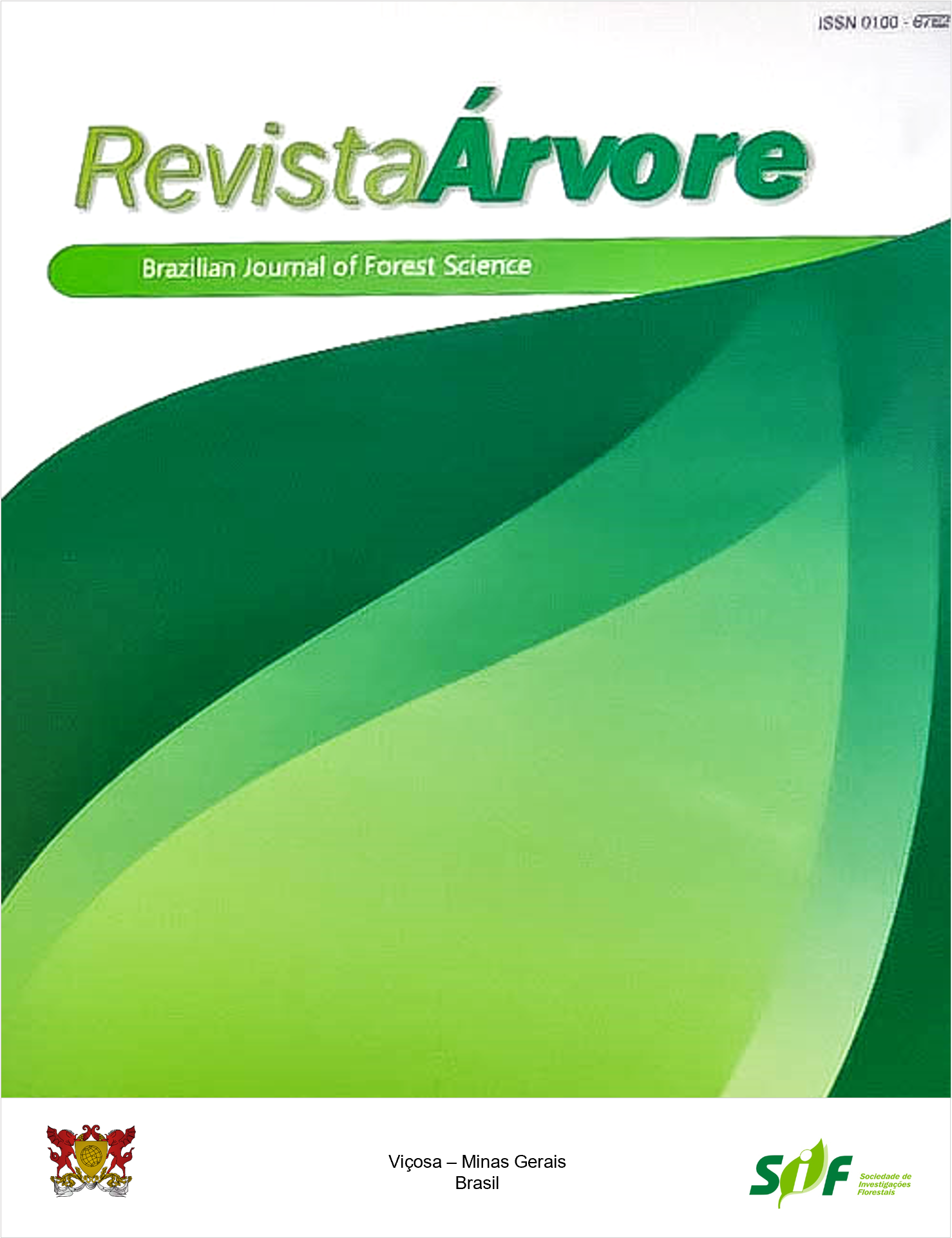MORPHOLOGICAL AND PHYSIOLOGICAL PARAMETERS IN YOUNG PLANTS OF Cordia trichotoma SUBMITTED TO THE APPLICATION OF PHOSPHORUS IN THE SOIL
Keywords:
Chlorophyll a fluorescence, Louro-pardo, Phosphate fertilizerAbstract
The application of phosphorus (P) doses in the soil can increase the growth of native tree species of economic and environmental interest, such as Cordia trichotoma. Thus, this research aims to evaluate the morphological and the physiological parameters in C. trichotoma seedlings, cultivated in soil with increased P content. The experiment was conducted under greenhouse conditions in pots with 2.5 dm-3 of soil, four doses of P (0, 150, 300 and 450 mg dm-3), and six replicates. P content in the soil, P concentrations in the leaves, morphological attributes (height, stem diameter, aerial dry matter, root dry matter, and leaf area) and physiological attributes (photosynthetic pigment content and chlorophyll α fluorescence) were determined 180 days after transplantation. The increase in the available P content in the soil allowed greater absorption of this element by the plant’s roots, increasing the concentration in the leaves, and therefore favoring the energetic metabolism of the plants. In addition, the higher influx and accumulation of P in the plant when 450 mg dm-3 was used, increased the concentration of the photosynthetic pigments and increased the photosynthetic capacity of the C. trichotoma seedlings. The highest use of the light energy by photosystem II (Fv/Fm = 0.76) was observed in the seedlings cultivated with 450 mg dm-3 of P, with a 95% increase when compared to seedlings without P. Thus, we observed that this tree species is demanding and responsive to the higher P content available in the soil.
Keywords: Chlorophyll a fluorescence; Louro-pardo; Phosphate fertilizer
Downloads
Published
How to Cite
Issue
Section
License
Copyright (c) 2021 Revista Árvore

This work is licensed under a Creative Commons Attribution 4.0 International License.
All authors agreed to submit the work to Revista Árvore and granted the exclusive license to publish the article. The authors affirm that it is an original work and has not been previously published elsewhere. The scientific content and opinions expressed in the article are the sole responsibility of the authors and reflect their opinions, not necessarily representing the opinions of the editorial board of Revista Árvore or of the Society of Forest Investigations (SIF).




